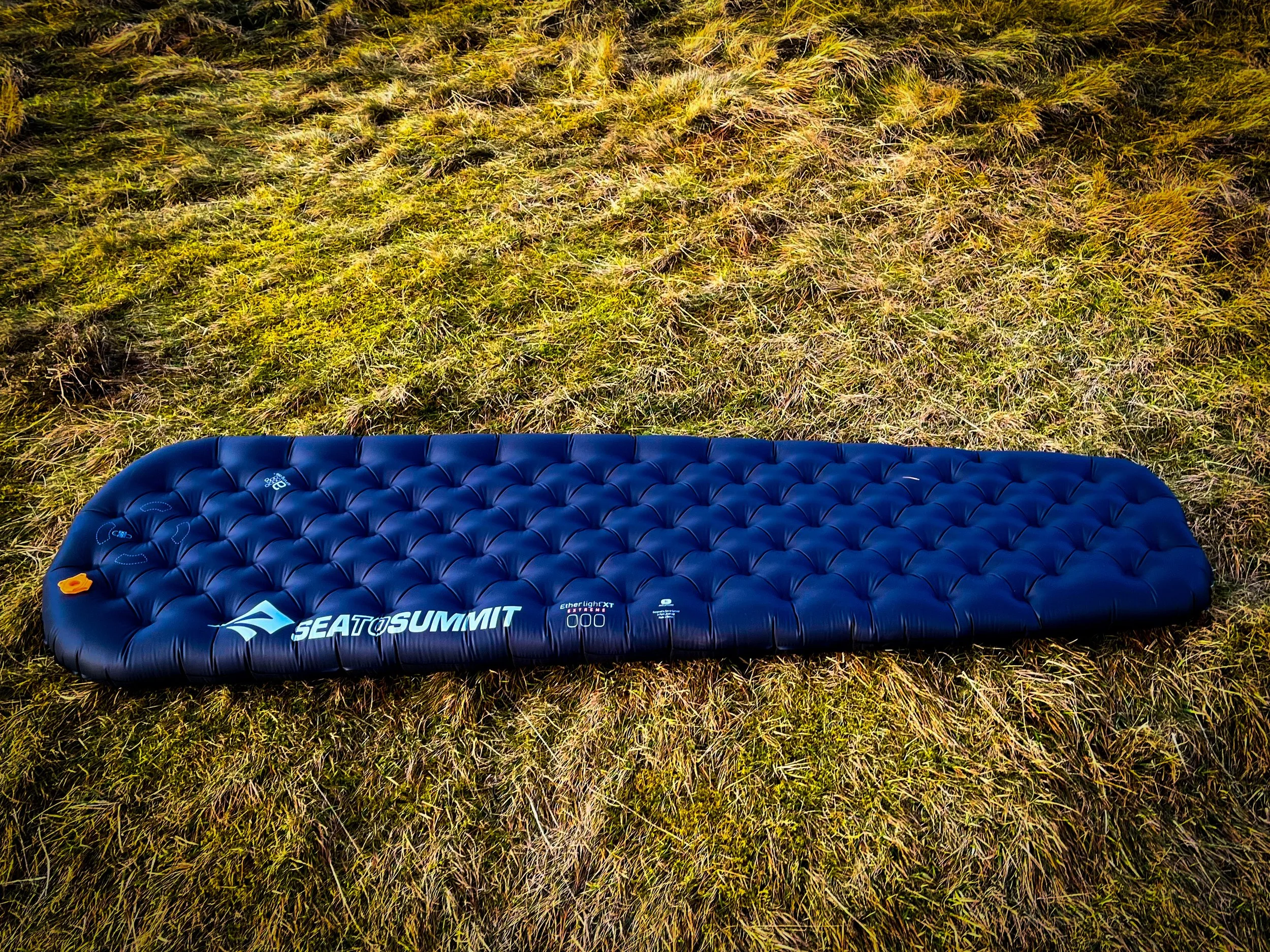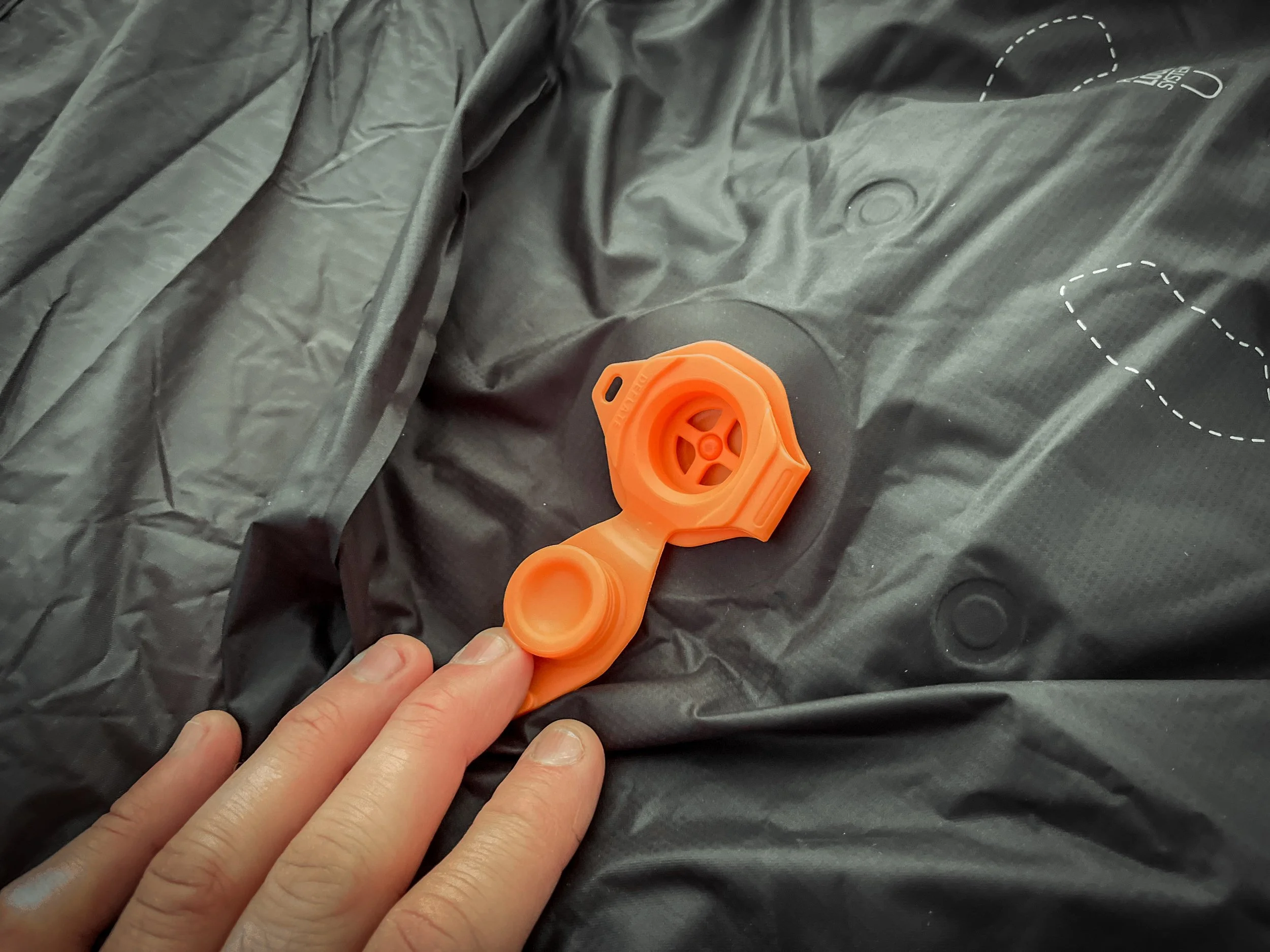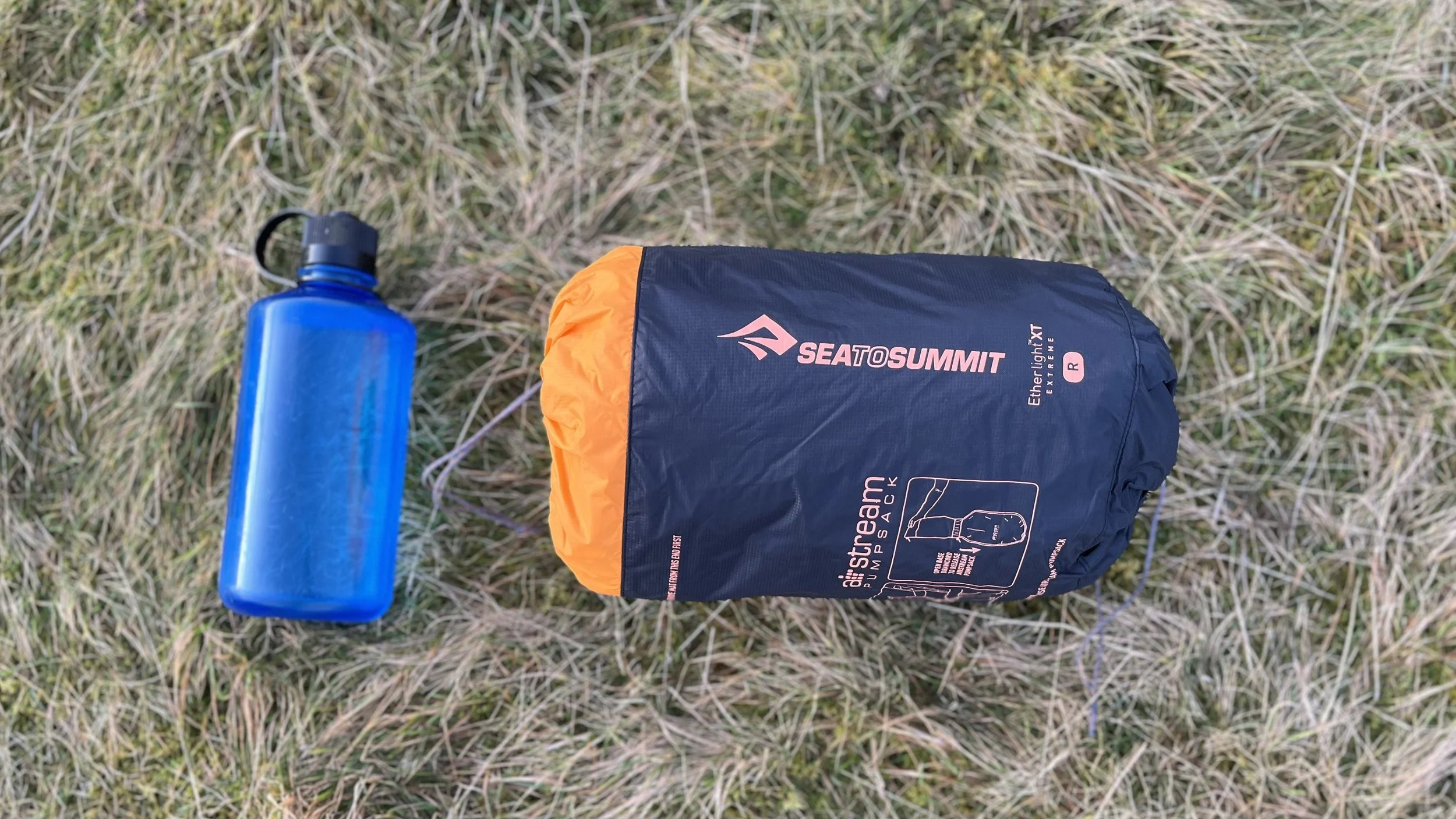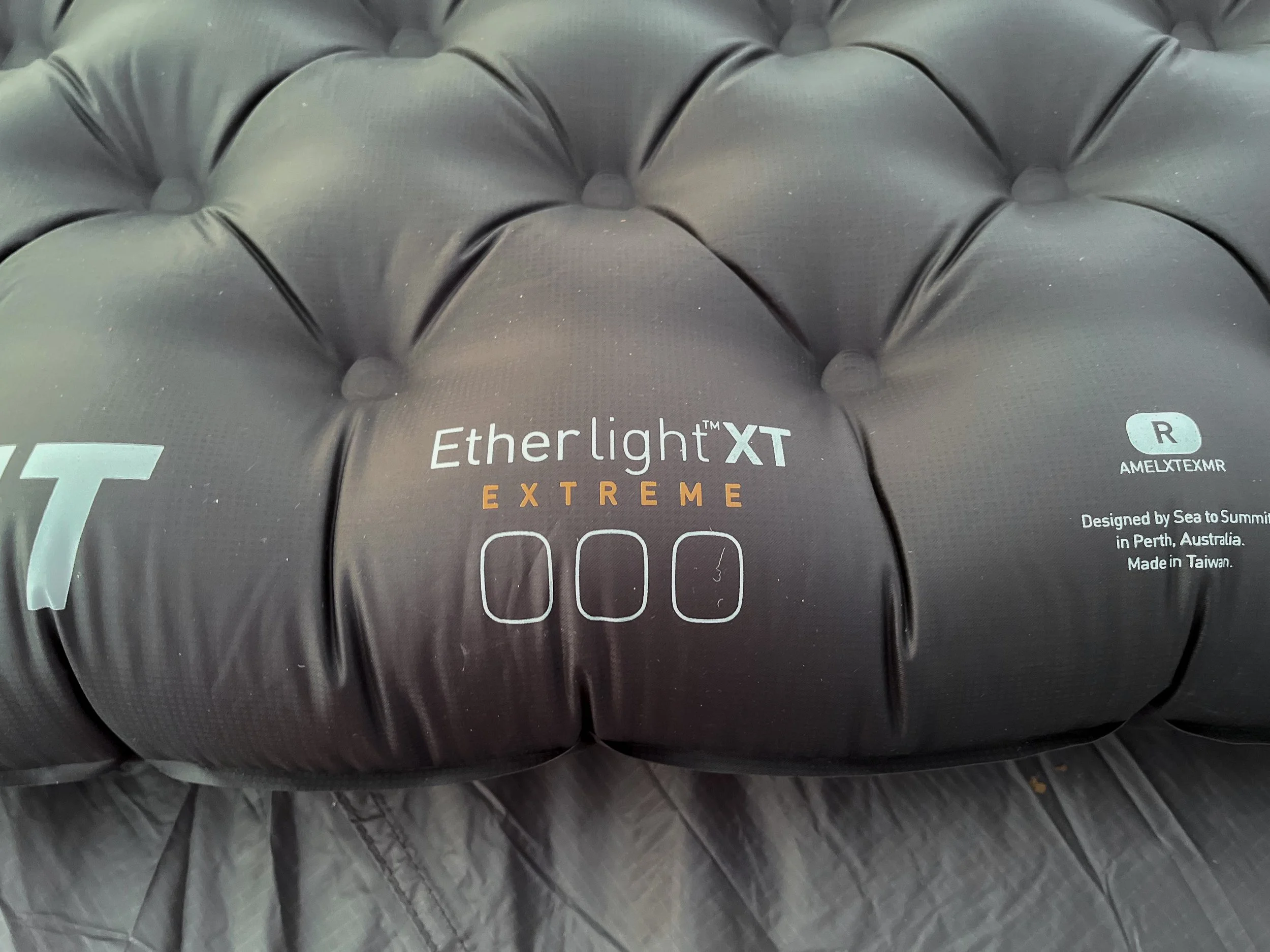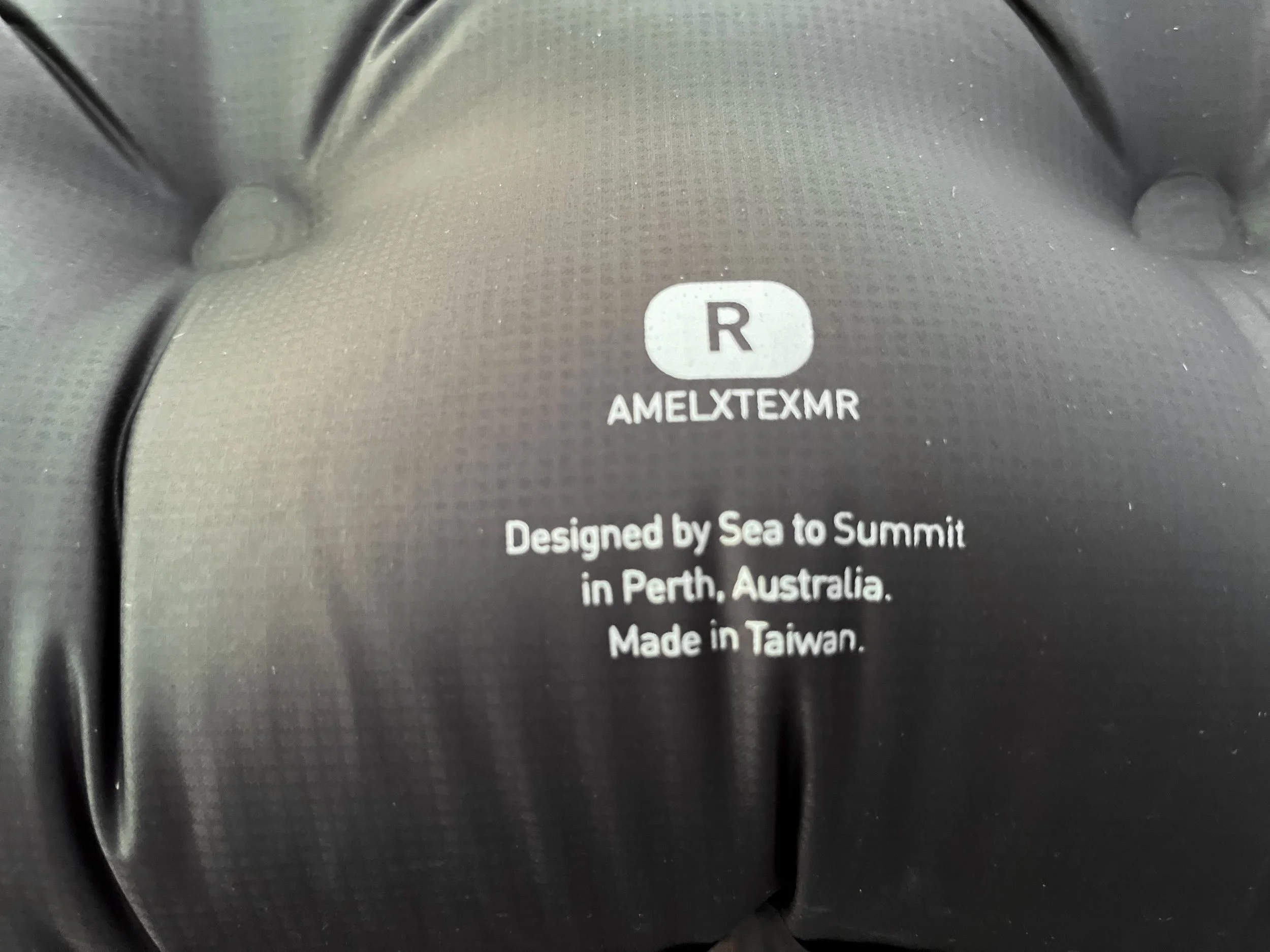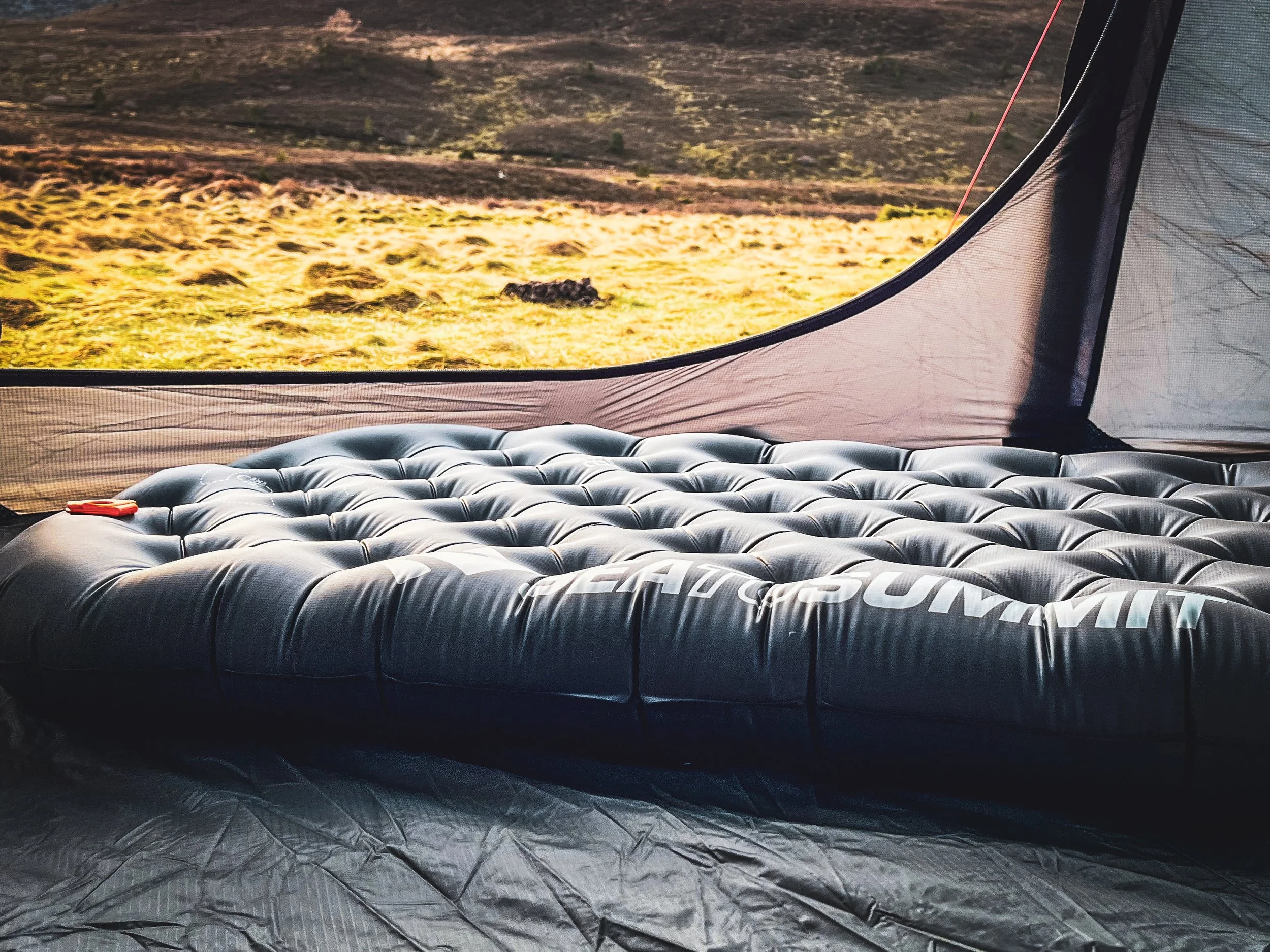Sea to Summit Ether Light XT Extreme sleeping pad review: Best-in-class comfort and all-season warmth
The Sea to Summit Ether Light XT Extreme is a pad as thick as its name is long. Built to help you sleep more comfortably in cold winter weather, it’s relatively lightweight, easy to carry and might well be the most comfortable pad out there for 4-season UK adventuring.
The Sea to Summit Ether Light XT Extreme
Ideal for: Winter backpacking, 4-season adventuring, wild camping
Not suitable for: Ultralight backpacking in summer
Thick, pillowy and incredibly comfortable, the Sea to Summit Ether Light XT Extreme is a luxurious sleeping pad that’s been designed to help you get better sleep on cold winter backpacking trips. Squarer than much of the competition (though still slightly tapered for increased packability) and coming with a 6.2 R-value for guaranteed warmth, we found that it comes remarkably close to the performance of an actual mattress — and might just be the comfiest pad on the market right now.
The Good
Luxuriously comfortable
Very quiet
Easy to inflate and deflate
Very warm
Comes with built-in inflation sack
The Bad
Quite expensive
Relatively large pack size
Heavier than many comparable lines
The Sea to Summit Ether Light XT Extreme sleeping pad
The Ether Light XT Extreme sleeping pad is Sea to Summit’s priciest, warmest and most top-of-the-range sleeping pad. A warmer version of the brand’s beloved Ether Light XT, the Extreme model comes with a 6.2 R-value thanks to the additional Thermolite insulation inside and promises to keep you warm and comfortable in temperatures well below freezing.
The regular version of the pad, the type we’re covering in this review, weighs in at 720 g. For larger users, side sleepers or people who simply like to spread out more, however, the Sea to Summit Ether Light XT Extreme also comes in a wide version, as well as a wide long version (for the tallest of us). These weigh 950 and 1050 g respectively, so up to 330 g more than the default ‘Regular’ mainstay. With that in mind, then, it’s clear that the Sea to Summit Ether Light XT Extreme isn’t the lightest pad on the market, with the likes of the Thermarest Neoair XTherm NXT offering substantially better warmth to weight (coming with an R-value of 7.3 and weighing only 454 g). But warmth to weight optimisation isn’t necessarily what Sea to Summit were going for when they designed this: They set out to make the most comfortable sleeping pad out there, one that’s easy to carry and an absolute joy to sleep on, and one that you can rely on irrespective of where and when you head outdoors. So, how did Sea to Summit do?
Price
At the time of writing, the Sea to Summit Ether Light XT Extreme will set you back £188 for the regular version when bought from Valley and Peak. Price-wise, then, this puts it firmly up against the likes of the big boys, namely the aforementioned Thermarest Neoair Xtherm NXT or the slightly bigger and heavier Exped 6 R, which also comes with a lower R-value.
Our experience using the Sea to Summit Ether Light XT Extreme
To test the Sea to Summit Ether Light XT Extreme, we used this pad multiple times on winter adventures through the first part of 2024. Most notably, we took it on a multi-day trip through Scotland’s Cairngorms National Park when we used it inside both a freezing tent and a warm bothy — all to see how it performs in changing conditions. To validate some online concerns about its pack size, we also loaded this thing into both a 40-litre and a 60-litre pack, and we carried it out in the Scottish Highlands to see if its pack size and weight ever do become an issue in real-world conditions. And all in, we have to say, we were nothing but impressed.
Comfort
The most impressive thing about the Sea to Summit Ether Light XT Extreme is undoubtedly how comfortable it is to sleep on. Sure, it might not be the lightest, nor is it the smallest when packed away, but we’ve never slept on a sleeping pad this comfortable before. Seriously, sleeping on this thing is the closest we’ve ever felt to sleeping in an actual bed in the backcountry — and it’s all down to the way that it’s made. To optimise the feel when you lie on the Ether Light XT Extreme, Sea to Summit instituted its proprietary ‘Air Sprung Cells’ technology, which works very similar to the way springs work in a regular air-sprung mattress. Inside the pad, dozens of interconnected air pockets work to support your weight as you press into different parts of the pad. This way, each pocket responds independently depending on the pressure, helping to better distribute your weight evenly and to ensure that nothing gets lumpy when you move. Due to this, we found that the pad is just as comfortable whether you sleep on your back, on your side or on your stomach. Granted, at only 55 cm thick at the shoulder end, the pad might be too narrow for many to properly sprawl out. But if you’re happy for an arm or an elbow to drape off the side, you’re going to have a super comfortable night’s sleep on this thing.
Pack size and weight
As mentioned, the Sea to Summit Ether Light XT Extreme isn’t breaking any records when it comes to pack size and weight. That being said, weighing at 720 g and packing down to the size of a rugby ball, we didn’t find anything about the pad’s weight or pack size to be overly disruptive when we packed our backpacks. In fact, we were easily able to stow both the pad and a -18-degree sleeping bag in the bottom sleeping bag compartment of our pack on our multi-day trek through the Cairngorms — even if a small amount of Tetris was required. Naturally, if you’re using a smaller pack, you may have to resort to storing the Ether Light XT Extreme in the main compartment of your bag. But for us, this is a sacrifice worth making; especially for the comfort you’ll enjoy when sleeping on this thing after a long day out on the trail.
Inflating and deflating
To inflate the Sea to Summit Ether Light XT Extreme, the pad’s stuff sack comes with a built-in inflation sack. This was a nice touch, meaning that you don’t need to worry about an extra bag blowing away in the wind or being forgotten at the back of a bothy somewhere. With the Sea to Summit Ether Light XT Extreme, everything packs neatly together. And when it comes to how you inflate your pad, we recommend you use the provided stuff sack. This is good for two reasons: One, any moisture that collects inside the bag may turn to ice in freezing conditions (and affect the thermoefficiency of the pad). Two, that same moisture will stay in your pad forever, causing it to get mouldy over time, which can affect the life of the product.
To deflate the pad, it’s simply a matter of unplugging the nozzle and releasing the air. Then, you just roll the bottom of the pad up towards the top to squeeze out all the contents, fold it up and roll it back into its stuff sack.
Durability
The Sea to Summit Ether Light XT Extreme is made from a blend of 30 and 40 D ripstop nylon, with the underside being thicker and more durable than the top. And unlike many other inflatable pads we’ve tested, such as the Big Agnes Zoom UL (which, granted, is a much lighter-weight 3-season pad that weighs almost half as much as the Ether Light XT Extreme), the material feels so thick and durable that we really didn’t have any qualms about lying on this pad practically anywhere. In fact, when we used it in an old Scottish bothy, our instinct was to just slap it down on the sleeping platform and jump on top — despite there being a plethora of splinters, nails and sharp-looking stones all over the place. And while we ended up brushing these off before we eventually went to sleep, there was no visible damage anywhere on the pad, instilling further confidence in us still that it would take some serious negligence to pop this pad. That being said, the Ether Light XT Extreme is still little more than a complicated balloon, however, so a certain degree of care needs to be exercised. If you use it in an ultralight tent with a thin bathtub, such as the Robens Chaser 1 or the Decathlon MT900 UL 2, you should still be reasonably cautious where you pitch. Make sure the ground is void of bracken, sticks or anything that could pierce both your bathtub or your pad through the night, and, if possible, pair them with a groundsheet. Thankfully, should anything happen to your pad overnight, Sea to Summit does include several repair patches (that we, luckily, never had to test) that should bring your pad back to life in a pinch.
Sea to Summit Ether Light XT EXtreme sleeping pad FAQs
-
The Sea to Summit Ether Light XT Extreme is a super warm pad. With an R-value of 6.2, this thing will comfortably see you through a UK winter — literally.
-
The Sea to Summit Ether Light XT Extreme is one of the comfiest sleeping pads we’ve ever tested. 4 inches thick and containing Sea to Summit’s proprietary Air Sprung Cells, we found that it wasn’t too dissimilar to sleeping on a real mattress at home.
-
The Sea to Summit Ether Light XT Extreme is very easy to inflate. The provided inflation sack means you can quickly pump it up without needing to breathe into it yourself, therefore avoiding moisture build-up and any lingering mould from forming inside the pad.
-
When bought directly from Sea to Summit, the Ether Light XT Extreme will set you back a whopping £215. This makes it one of the more expensive pads on the market. As a good sleeping pad is the foundation for a good night’s sleep outside, however, we always recommend people buy the best pad they can afford. In that sense, we consider the Ether Light XT Extreme to definitely be worth the money — but only if you’re able to comfortably afford it.
-
The Sea to Summit Ether Light XT Extreme is made from a blend of 30 and 40D nylon, which makes it as thick and rugged as expedition-quality gear. As with any inflatable pad, however, you’ll still need to be very cautious when you lie it down on a thin bathtub floor as sharp stones or thorns could still puncture it.
Conclusion
Overall, we are big fans of the Sea to Summit Ether Light XT Extreme. It’s easily the most comfortable pad we’ve ever slept on, and due to the luxurious almost hotel-like feel of the sleeping experience, we’re happy to carry the higher weight and pack size, especially when compared to the likes of the Thermarest Neoair Xtherm NXT. Additionally, with an R-value of 6.2, you can be confident using this thing down to
